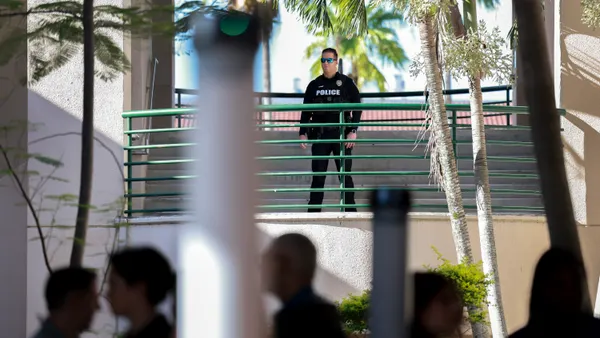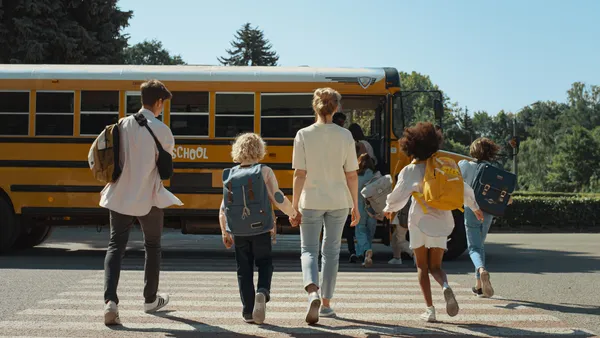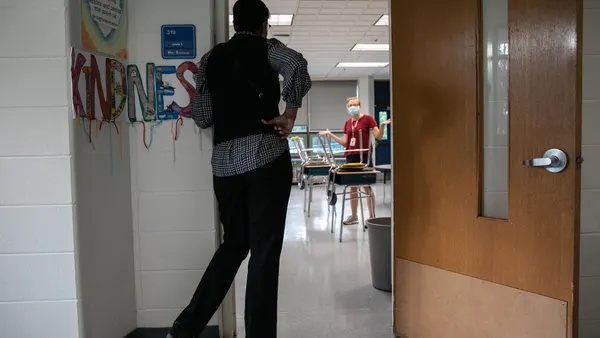Dive Brief:
- State education agencies have directed about $1 billion of federal COVID-19 emergency funding toward initiatives on student and staff well-being, including through programs to improve mental health, social-emotional support, school nutrition and wraparound services for students, according to the Council of Chief State School Officers' COVID Relief Data Project.
- Examples of these state well-being initiatives include Vermont's PATH Forward program to provide targeted wellness supports for educators and Iowa's partnership with a university for professional development opportunities, said Austin Estes, program director for the CCSSO COVID Relief Data Project.
- Although the dedicated state set-aside from the Elementary and Secondary School Emergency Relief fund is also being used for more expensive programs focused on accelerated learning, summer and after-school activities, school personnel and curriculum, CCSSO said students' mental well-being is pivotal in helping them succeed academically.
Dive Insight:
According to the data project, as of Sept. 12, states had planned, budgeted or committed to spending 94% of the $19 billion in relief funding they received in the set-aside. Of the total $189.5 billion Congress approved for K-12 COVID-19 recovery efforts, state education agencies got a 10% set-aside in each of the three ESSER allocations.
There's much flexibility for spending the funds, but for the largest of the three ESSER allocations — the American Rescue Plan totaling $121.9 billion — states had to use 5% of the overall allocation on unfinished learning, 1% for summer school and 1% for after-school programming. Aside from those requirements, states could determine COVID-19 recovery spending priorities as long as the activities are authorized under K-12 education laws.
The spending on student and staff well-being, however, is noteworthy, said Estes and Anne Bowles, program director for student-centered learning at CCSSO.
"State education agency leaders understand that when students learn in safe supportive environments that prioritize relationships, they can really develop agency, belonging. They can be positioned to succeed more academically, so states are really seeing it as a priority," Bowles said.
State education leadership has not only planned for new statewide initiatives, but has also helped to elevate existing best practices, such as multi-tiered systems of support, telehealth and pooling resources across districts within a state in certain regions, Bowles said.
Bowles also noted the CCSSO data shows that states across the country and across political lines are prioritizing students and staff well-being.
That's "illustrative of the fact that education leaders really do know that students' well-being and mental health impacts how they do in the classroom," she said.
In Illinois, state education leaders developed seven Social-Emotional Learning Hubs that offer districts professional development, coaching and support to establish and expand SEL programs for students, said Liam Chan Hodges, media coordinator for the Illinois State Board of Education, in an email.
The hubs also are supporting schools' participation in the Resilience Education to Advance Community Healing Statewide Initiative. That program assists school-community leadership teams to use data-driven strategies for student trauma and mental health needs through the process of conducting trauma assessments and action plans.
The state has dedicated $18 million from its ESSER set-aside for the learning hubs, Chan Hodges said. The state is tracking the programs' impact and focusing on sustainable models, including building capacity of staff to better respond to trauma.
"Capacity to start new programs is a challenge that we have heard consistently from school districts," Chan Hodges said. "That's why we dedicated our ESSER funds to programs that would lift the burden off school leaders by providing research-backed programs with sustainability in mind."
A recent RAND Corp. report highlights six school communities that have partnered with organizations providing out-of-school-time services and activities, and how the partners work together to improve student SEL.
For instance, Diamond View Elementary School, in Florida's Palm Beach County, and its out-of-school-time program, Diamond View Afterschool, helped those adults working with students to become more aware of SEL practices to promote positive interactions with children throughout the day, according to the report. SEL training was provided to teachers, as well as parents and non-instructional staff.







 Dive Awards
Dive Awards






